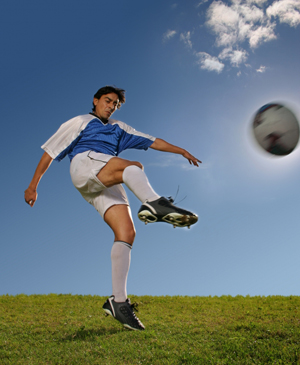
During our treatment sessions, we get to know our patients and build relationships with them as they heal and reclaim that quality of life that has alluded them due to the nature of their condition.
It is often we talk about life and patients tend to use this time to ask questions concerning their condition and other health-related issues or in some cases, patients ask health-related questions that just pique their interest.
Often patients will ask us “What are the most common sports-related injuries?” which spurs great dialog. Let us take a moment to answer this question on today's blog spot.
I think by and large the most common sports-related injury is the Type I Sprains/Strains, most commonly occurring as an ankle sprain/strain or tendonitis of the ankle tendons. This makes some sense in that most sports involve some kind of lower body strength and agility such as track and field, basketball, soccer, football, baseball/softball, tennis, cheerleading, gymnastics, volleyball, Wrestling, Golf, MMA, Boxing, Racquet Ball, Pickle Ball, Hockey/Field Hockey, Rugby, Lacrosse, and so on. With so many sports needing the use of our lower extremities, it is no wonder ankle sprains/strains take the top spot.
The most common sports-related injuries have a lot to do with the lower extremities such as groin pulls, shin splints, hamstring strains, plantar fasciitis, jumpers knee, and medial tibial stress syndrome just to name a few. Let us not forget to mention the upper extremity as well seeing that there is a high occurrence of tennis elbow and golfers elbow.

Next on this shortlist are Grade II tears, also known as Type II Strains/Sprains. Tears are either full or partial (complete or incomplete) and are just as prevalent in the upper and lower extremities alike. Type II tears are partial tears also called incomplete tears and are way more common than Type III tears. It is common to see rotator cuff, biceps, quadriceps, hamstring, PCL, MCL, LCL, and meniscus type II tears as well as other musculoskeletal structures in the upper and lower extremities.
Last for us to talk about are Type III Sprain/Strains also known as complete tears. This nasty group of injuries is in most cases surgical. This is known as a full-thickness tear, complete tear, or more specifically a Type III tear. The most common areas to see Type III tears are the same as Type II (mentioned above) but in this case, the tears are full-thickness tears and require a surgical intervention.
If you have any comments or questions feel free to call our office and schedule a time to speak with our Knoxville sports chiropractor, Dr. Bert, at your convenience. If we can help you in any way, please feel free to call us and schedule an appointment today for an evaluation.
Until next time, remember it’s easier to stay well than to get well.
8029 Ray Mears Blvd, Suite 300
Knoxville, TN
37919
Phone: 865-337-5574
Monday
7am-12pm & 1pm-6pm
Tuesday
7am-12pm & 1pm-4pm
Wednesday
7am-1pm
Thursday
7am-12pm & 1pm-6pm
Friday
7am-12pm & 1pm-4pm
Saturday & Sunday
Closed